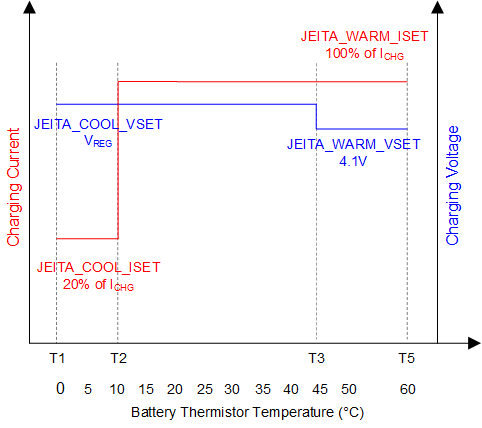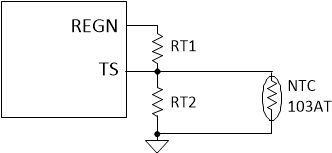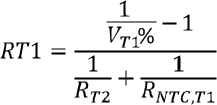SLUSDF7A January 2020 – February 2022 BQ25616
PRODUCTION DATA
- 1 Features
- 2 Applications
- 3 Description
- 4 Revision History
- 5 Description (continued)
- 6 Device Comparison Table
- 7 Pin Configuration and Functions
- 8 Specifications
-
9 Detailed Description
- 9.1 Overview
- 9.2 Functional Block Diagram
- 9.3
Feature Description
- 9.3.1 Power-On-Reset (POR)
- 9.3.2 Device Power Up From Battery Without Input Source
- 9.3.3 Power Up From Input Source
- 9.3.4 Boost Mode Operation From Battery
- 9.3.5 Standalone Charger
- 9.3.6 Power Path Management
- 9.3.7 Battery Charging Management
- 9.3.8 Status Outputs ( PG, STAT)
- 9.3.9 Protections
- 9.4 Device Functional Modes
- 10Application and Implementation
- 11Power Supply Recommendations
- 12Layout
- 13Device and Documentation Support
- 14Mechanical, Packaging, and Orderable Information
Package Options
Mechanical Data (Package|Pins)
- RTW|24
Thermal pad, mechanical data (Package|Pins)
- RTW|24
Orderable Information
9.3.7.4.1 JEITA Guideline Compliance During Charging Mode (BQ25616J)
To improve the safety of charging Li-ion batteries, the JEITA guideline was released on April 20, 2007. The guideline emphasized the importance of avoiding a high charge current and high charge voltage at certain low and high temperature ranges.
To initiate a charge cycle, the voltage on TS pin, as a percentage of VREGN, must be within the VT1_FALL% to VT5_RISE% thresholds. If the TS voltage percentage exceeds the T1-T5 range, the controller suspends charging, a TS fault is reported and waits until the battery temperature is within the T1-T5 range.
At cool temperature (T1-T2), JEITA recommends the charge current to be reduced to 20% of ICHG. At warm temperature (T3-T5), JEITA recommends charge voltage less than 4.1 V.
 Figure 9-6 JEITA
Profile (BQ25616J)
Figure 9-6 JEITA
Profile (BQ25616J)
Equation 3 through Equation 4 describe how to calculate resistor divider
values on the TS pin.
 Figure 9-7 TS Pin
Resistor Network
Figure 9-7 TS Pin
Resistor Network

In the equations above, RNTC, T1 is the NTC thermistor resistance value at temperature T1 and RNTC, T5 is the NTC thermistor resistance value at temperature T5. Selecting a 0°C to 60°C range for a Li-ion or Li-polymer battery then:
- RNTC,T1 = 27.28 kΩ (0°C)
- RNTC,T5 = 3.02 kΩ (60°C)
- RT1 = 5.3 kΩ
- RT2 = 31.14 kΩ